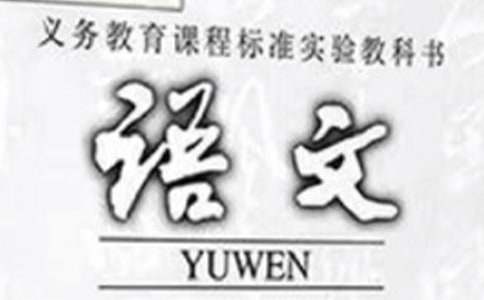Java中Websocket使用實例解析
在 WebSocket API,瀏覽器和服務器只需要要做一個握手的動作,然后,瀏覽器和服務器之間就形成了一條快速通道。兩者之間就直接可以數據互相傳送。下面小編給大家介紹Java中Websocket使用實例解析,歡迎閱讀!
Java中Websocket使用實例解析運行環境
客戶端
實現了websocket的瀏覽器
Chrome Supported in version 4+ Firefox Supported in version 4+ Internet Explorer Supported in version 10+ Opera Supported in version 10+ Safari Supported in version 5+
服務端
依賴
<dependency>
<groupId>org.apache.tomcat</groupId>
<artifactId>tomcat-websocket-api</artifactId>
<version>7.0.47</version>
<scope>provided</scope>
</dependency>
<dependency>
<groupId>javax</groupId>
<artifactId>javaee-api</artifactId>
<version>7.0</version>
<scope>provided</scope>
</dependency>
注意:早前業界沒有統一的標準,各服務器都有各自的實現,現在J2EE7的JSR356已經定義了統一的標準,請盡量使用支持最新通用標準的服務器。
我是用的Tomcat 7.0.57 + Java7
必須是Tomcat 7.0.47以上
ps:最早我們是用的Tomcat 7自帶的實現,后來要升級Tomcat 8,結果原來的實現方式在Tomcat 8不支持了,就只好切換到支持Websocket 1.0版本的Tomcat了。
主流的java web服務器都有支持JSR365標準的版本了,請自行Google。
用nginx做反向代理的需要注意啦,socket請求需要做特殊配置的,切記!
Tomcat的處理方式建議修改為NIO的方式,同時修改連接數到合適的參數,請自行Google!
服務端不需要在web.xml中做額外的配置,Tomcat啟動后就可以直接連接了。
實現
import com.dooioo.websocket.utils.SessionUtils;
import org.apache.commons.logging.Log;
import org.apache.commons.logging.LogFactory;
import javax.websocket.*;
import javax.websocket.server.PathParam;
import javax.websocket.server.ServerEndpoint;
/**
* 功能說明:websocket處理類, 使用J2EE7的標準
* 切忌直接在該連接處理類中加入業務處理代碼
*/
//relationId和userCode是我的業務標識參數,websocket.ws是連接的路徑,可以自行定義
@ServerEndpoint("/websocket.ws/{relationId}/{userCode}")
public class WebsocketEndPoint {
private static Log log = LogFactory.getLog(WebsocketEndPoint.class);
/**
* 打開連接時觸發
* @param relationId
* @param userCode
* @param session
*/
@OnOpen
public void onOpen(@PathParam("relationId") String relationId,
@PathParam("userCode") int userCode,
Session session){
log.info("Websocket Start Connecting: " + SessionUtils.getKey(relationId, userCode));
SessionUtils.put(relationId, userCode, session);
}
/**
* 收到客戶端消息時觸發
* @param relationId
* @param userCode
* @param message
* @return
*/
@OnMessage
public String onMessage(@PathParam("relationId") String relationId,
@PathParam("userCode") int userCode,
String message) {
return "Got your message (" + message + ").Thanks !";
}
/**
* 異常時觸發
* @param relationId
* @param userCode
* @param session
*/
@OnError
public void onError(@PathParam("relationId") String relationId,
@PathParam("userCode") int userCode,
Throwable throwable,
Session session) {
log.info("Websocket Connection Exception: " + SessionUtils.getKey(relationId, userCode));
log.info(throwable.getMessage(), throwable);
SessionUtils.remove(relationId, userCode);
}
/**
* 關閉連接時觸發
* @param relationId
* @param userCode
* @param session
*/
@OnClose
public void onClose(@PathParam("relationId") String relationId,
@PathParam("userCode") int userCode,
Session session) {
log.info("Websocket Close Connection: " + SessionUtils.getKey(relationId, userCode));
SessionUtils.remove(relationId, userCode);
}
}
工具類用來存儲唯一key和連接
這個是我業務的`需要,我的業務是服務器有對應動作觸發時,推送數據到客戶端,沒有接收客戶端數據的操作。
import javax.websocket.Session;
import java.util.Map;
import java.util.concurrent.ConcurrentHashMap;
/**
* 功能說明:用來存儲業務定義的sessionId和連接的對應關系
* 利用業務邏輯中組裝的sessionId獲取有效連接后進行后續操作
*/
public class SessionUtils {
public static Map clients = new ConcurrentHashMap<>();
public static void put(String relationId, int userCode, Session session){
clients.put(getKey(relationId, userCode), session);
}
public static Session get(String relationId, int userCode){
return clients.get(getKey(relationId, userCode));
}
public static void remove(String relationId, int userCode){
clients.remove(getKey(relationId, userCode));
}
/**
* 判斷是否有連接
* @param relationId
* @param userCode
* @return
*/
public static boolean hasConnection(String relationId, int userCode) {
return clients.containsKey(getKey(relationId, userCode));
}
/**
* 組裝唯一識別的key
* @param relationId
* @param userCode
* @return
*/
public static String getKey(String relationId, int userCode) {
return relationId + "_" + userCode;
}
}
推送數據到客戶端
在其他業務方法中調用
/**
* 將數據傳回客戶端
* 異步的方式
* @param relationId
* @param userCode
* @param message
*/
public void broadcast(String relationId, int userCode, String message) {
if (TelSocketSessionUtils.hasConnection(relationId, userCode)) {
TelSocketSessionUtils.get(relationId, userCode).getAsyncRemote().sendText(message);
} else {
throw new NullPointerException(TelSocketSessionUtils.getKey(relationId, userCode) + " Connection does not exist");
}
}
我是使用異步的方法推送數據,還有同步的方法
客戶端代碼
var webSocket = null;
var tryTime = 0;
$(function () {
initSocket();
window.onbeforeunload = function () {
//離開頁面時的其他操作
};
});
/**
* 初始化websocket,建立連接
*/
function initSocket() {
if (!window.WebSocket) {
alert("您的瀏覽器不支持websocket!");
return false;
}
webSocket = new WebSocket("ws://127.0.0.1:8080/websocket.ws/" + relationId + "/" + userCode);
// 收到服務端消息
webSocket.onmessage = function (msg) {
console.log(msg);
};
// 異常
webSocket.onerror = function (event) {
console.log(event);
};
// 建立連接
webSocket.onopen = function (event) {
console.log(event);
};
// 斷線重連
webSocket.onclose = function () {
// 重試10次,每次之間間隔10秒
if (tryTime < 10) {
setTimeout(function () {
webSocket = null;
tryTime++;
initSocket();
}, 500);
} else {
tryTime = 0;
}
};
}
其他調試工具
Java實現一個websocket的客戶端
依賴:
<dependency>
<groupId>org.java-websocket</groupId>
<artifactId>Java-WebSocket</artifactId>
<version>1.3.0</version>
</dependency>
代碼:
import java.io.IOException;
import javax.websocket.ClientEndpoint;
import javax.websocket.OnError;
import javax.websocket.OnMessage;
import javax.websocket.OnOpen;
import javax.websocket.Session;
@ClientEndpoint
public class MyClient {
@OnOpen
public void onOpen(Session session) {
System.out.println("Connected to endpoint: " + session.getBasicRemote());
try {
session.getBasicRemote().sendText("Hello");
} catch (IOException ex) {
}
}
@OnMessage
public void onMessage(String message) {
System.out.println(message);
}
@OnError
public void onError(Throwable t) {
t.printStackTrace();
}
}
import java.io.BufferedReader;
import java.io.IOException;
import java.io.InputStreamReader;
import java.net.URI;
import javax.websocket.ContainerProvider;
import javax.websocket.DeploymentException;
import javax.websocket.Session;
import javax.websocket.WebSocketContainer;
public class MyClientApp {
public Session session;
protected void start()
{
WebSocketContainer container = ContainerProvider.getWebSocketContainer();
String uri = "ws://127.0.0.1:8080/websocket.ws/relationId/12345";
System.out.println("Connecting to " + uri);
try {
session = container.connectToServer(MyClient.class, URI.create(uri));
} catch (DeploymentException e) {
e.printStackTrace();
} catch (IOException e) {
e.printStackTrace();
}
}
public static void main(String args[]){
MyClientApp client = new MyClientApp();
client.start();
BufferedReader br = new BufferedReader(new InputStreamReader(System.in));
String input = "";
try {
do{
input = br.readLine();
if(!input.equals("exit"))
client.session.getBasicRemote().sendText(input);
}while(!input.equals("exit"));
} catch (IOException e) {
// TODO Auto-generated catch block
e.printStackTrace();
}
}
}
chrome安裝一個websocket客戶端調試
最后
為了統一的操作體驗,對于一些不支持websocket的瀏覽器,請使用socketjs技術做客戶端開發。
【Java中Websocket使用實例解析】相關文章:
Java中synchronized的使用實例12-03
java讀取解析xml文件實例11-05
Java 異步回調機制實例解析11-30
JAVA中If語句的使用10-03
Java中的多態用法實例分析11-29
Java中shuffle算法的使用12-03
java中通用的線程池實例代碼11-29
Java中的JDBC事務解析11-29
Java中運算符的使用11-18
这里有更多你想看的|
|
- 上一篇:淺談Java中的弱引用
- 下一篇:返回列表







